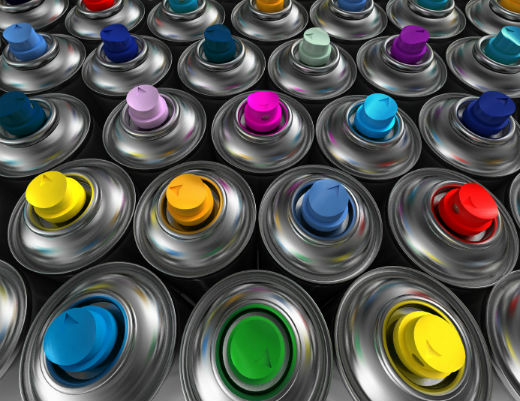Aerosol makes me think of a big 1980s big hairdo and plenty of hairspray to go around. But, the history of mass commercial use goes back long before the Madonna era, to 1949 to be exact. Then 27-year-old Robert H. Abplanalp invented a cheap and practical lightweight aluminum can that has a crimp on valve enabling liquids to be sprayed from a can under the pressure of an inert gas. By the mid-1970s, the concern over the effect on the ozone layer, thanks to the use of fluorocarbons (and the U.S. ban in 1978), prompted Abplanalp to substitute water-soluble hydrocarbons. As for what the cans are made of and what to do with them, this is the place to start.

What the cans are constructed of
Aerosol cans are simply constructed, either of steel or aluminum with a tin coating. The empty containers are recyclable. No different from other empty steel and aluminum cans, more than 5,000 North American communities include empty aerosol cans in their recycling programs, according to the Consumer Aerosol Products Council and Chemical Specialties Manufacturers Association. As an added bonus, today’s aerosol cans use steel that contains 25% recycled metal.
Where to recycle aerosol cans
The key is to recycling aerosol cans is to get them to their scrap steel state. In other words, the bottle must be completely empty of chemicals. This makes it possible for tin and plastic to be recovered as well. But don’t fret; drop-off locations around the country worry about this so that you don’t have to. By using the
recycling location search on 1-800-RECYCLING.com, finding a recycling drop-off location is easy whether you live in a big city or not. For instance, I asked the finder to locate a place to recycle aerosol cans in Fargo, ND. My search yielded two results. See where the nearest one is; you may be pleasantly surprised. Granted, some areas are better covered than others.
One thing is true no matter where you live: While it has been over 60 years since aerosol spray cans changed everything from the color of our walls to the volume in our hair, our recycling of them is still evolving and growing.
